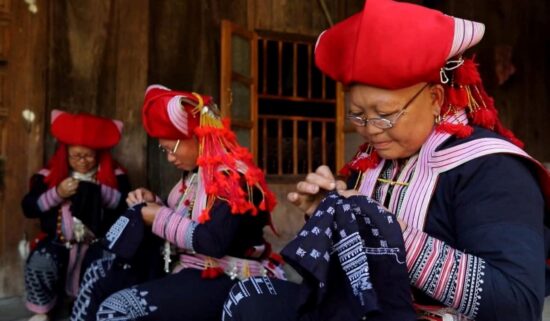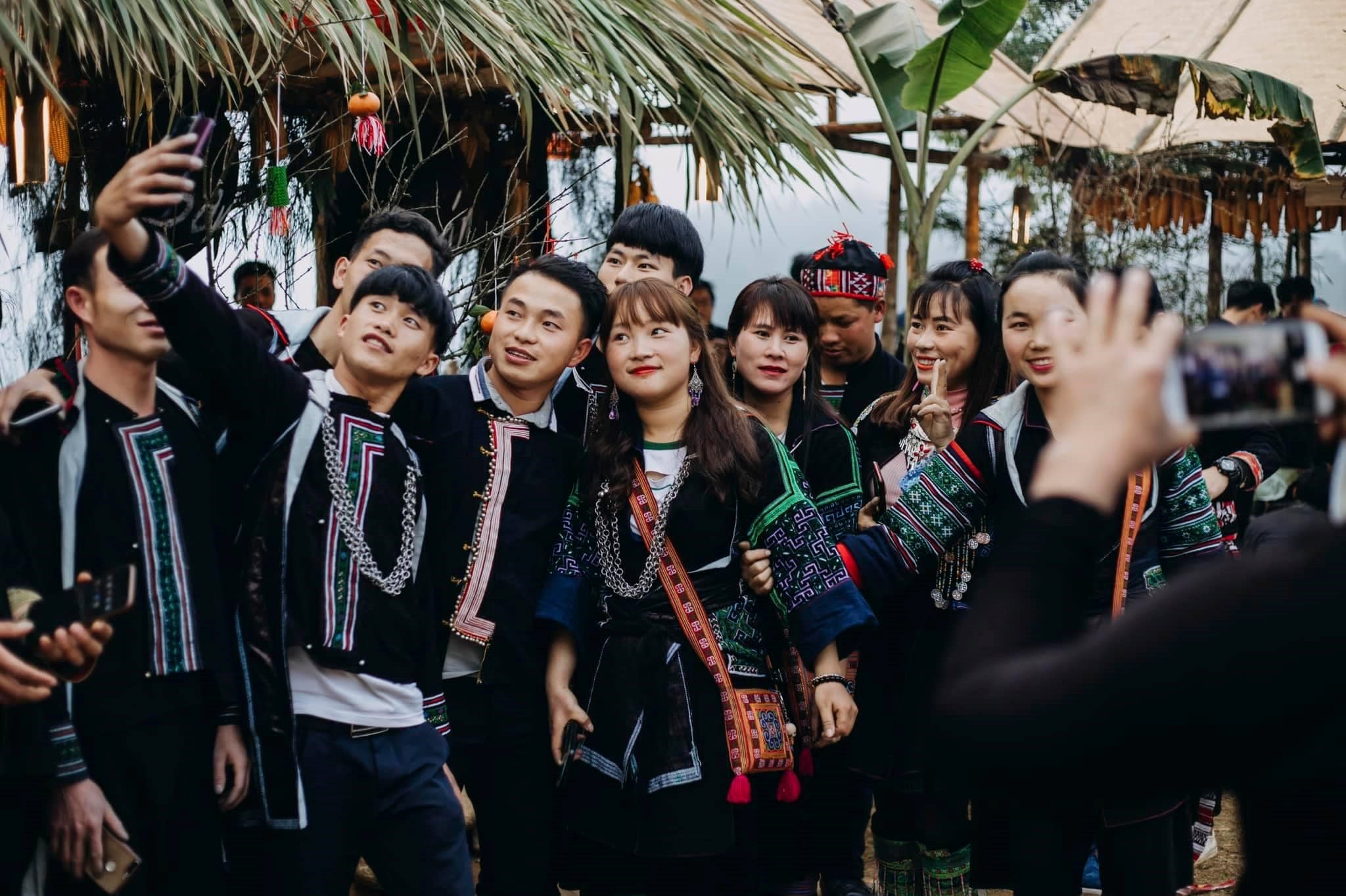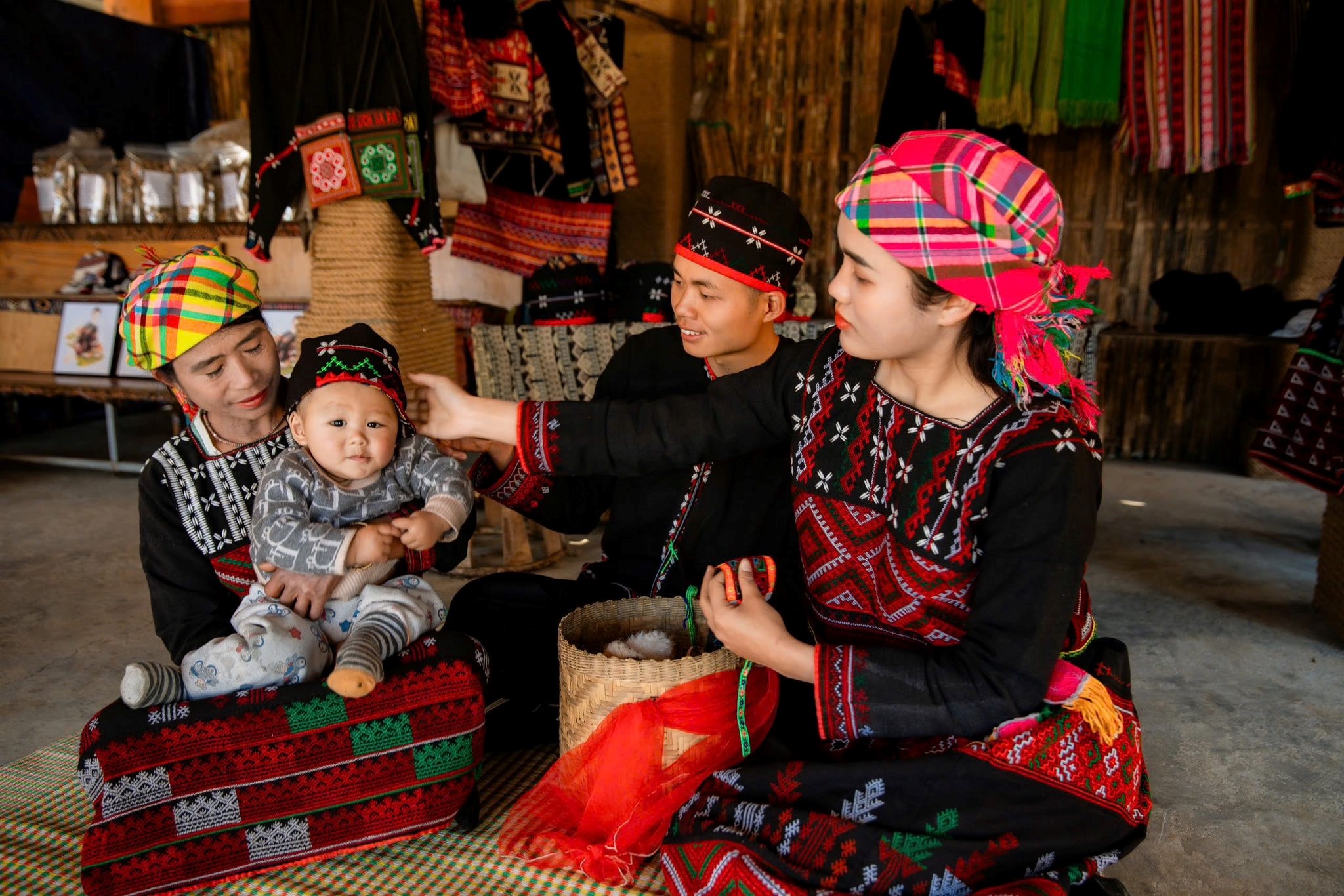- You are here:
- Home »
- About Sapa »
- Sa Pa – A Convergence of Diverse Ethnic Cultures

Sa Pa – A Convergence of Diverse Ethnic Cultures
Sa Pa (Lao Cai) is a famous destination known for its majestic, untouched mountain landscapes, unique climate, and especially for its rich cultural diversity. It is home to a mosaic of ethnic minority groups, each preserving their own distinct cultural identity.
Located in the western highlands of Lao Cai Province, the town of Sa Pa is inhabited by various ethnic groups including the Mong, Dao, Tay, Giay, Xa Pho, and Kinh. Each group contributes to the region’s vibrant cultural tapestry through their language, traditional clothing, customs, and rituals. This cultural diversity is a key attraction, drawing both domestic and international visitors who come to explore and experience the area’s unique traditional heritage.
The Red Dao People
The traditional attire of the Red Dao people is strikingly colorful. In the past, Red Dao men typically wore their hair long and tied it into a bun at the back or top of the head. Their everyday clothing includes short or long indigo or black garments adorned with distinct patterns. Red Dao women wear more elaborate clothing, based on the belief that a beautiful outfit must feature five colors, with red as the dominant shade. Every part of their attire—from clothes and headscarves to belts and hats—is intricately handwoven and embroidered by Dao women. A complete outfit, known as “huy lâu”, includes garments, hat, scarf, belt, footwear, and leg wraps.
One notable aspect of Red Dao culture is their writing system: they do not have a native script but use a modified form of Chinese characters known as Nom Dao, and their spoken language belongs to the Mong-Dao linguistic family. The Red Dao in Sa Pa are also well known for their traditional herbal bath remedies. Tourists visiting Sa Pa often seek out this therapeutic bath, which can use over 10 to even 120 different types of medicinal leaves. This herbal bathing tradition is more than a health treatment—it’s a cultural identity that symbolizes healing from muscle and joint pain, colds, itching, constipation, and postpartum fatigue. It’s an essential element of the Red Dao’s cultural heritage.

The Black Mong People
The Black Mong are the largest ethnic group in Sa Pa. Their traditional clothing is primarily black, made from hemp fabric dyed with natural indigo. Mong women typically wear a three-piece jacket open at the chest, paired with a vest and a pleated skirt, decorated with intricate hand-embroidered patterns. They are renowned for their textile craftsmanship, including weaving, embroidery, and indigo dyeing. Their clothing-making techniques have been recognized as a National Intangible Cultural Heritage of Vietnam.
The Black Mong mainly reside in villages such as Cat Cat, Lao Chai, Seo Mi Ty, and Ta Giang Phinh, with Cat Cat being the most densely populated. Today, they continue to preserve and promote their traditional values, especially their clothing craftsmanship, which plays a vital role in preserving ethnic identity and attracting tourists eager to learn about their heritage.

The Giay People
The Giay are another ethnic group in Sa Pa, primarily found in Ta Van and Lao Chai. They contribute to Sa Pa’s cultural richness through their distinctive clothing, festivals, cuisine, and daily customs. Their main livelihoods include wet rice cultivation and livestock farming. Giay women’s clothing is unique, typically featuring black trousers and multi-colored tops (except white), fastened with silver or fabric buttons on the right side.
One of their most significant festivals is Roong Pooc, held annually in the first lunar month to pray for peace and a prosperous harvest. Giay cuisine includes traditional dishes such as sticky rice, puffed rice cakes, rice cakes (bánh giầy), and meals made from stream fish, pork, and horse meat. They also have a rich treasury of oral literature, proverbs, and folk songs that are performed during weddings, festivals, and funerals.
The Tay People
The Tay are one of the ethnic minorities living in Sa Pa, mostly settled in lowland villages such as Ban Ho, Nam Sai, and Thanh Phu. These areas feature flat valleys ideal for rice farming and fishing. The Tay community is known for its stilt houses, traditional attire, folk songs like “luon” and “khap”, and festivals such as the Long Tong (Field-Going Festival).
The Xa Pho People
Also known as the Phu La, the Xa Pho are one of Sa Pa’s smallest ethnic groups, recognized for their cultural uniqueness, particularly the art of scarf dancing performed during festivals and welcoming ceremonies. Among their traditional festivals is the “village sweeping” ceremony, which symbolizes the banishment of evil spirits and the wish for a peaceful, prosperous new year.

Xa Pho women wear distinctive clothing with detailed embroidery, beaded patterns, and vibrant colors such as yellow, blue, and red. Despite economic difficulties, the Xa Pho have maintained and nurtured their cultural traditions, passing them down through generations.
Sa Pa’s indigenous culture is a colorful mosaic that fascinates both domestic and international travelers. It proudly endures across generations of tourism. When in Sa Pa, don’t miss the chance to spend a day in a local village. Whether it’s the stillness of the mountains, the beauty of a tree under the sunset, or simply learning about local customs—each experience is sure to touch your curious heart.
Thanh Tuan
About the Author Sapa Tourism Office
Popular posts

